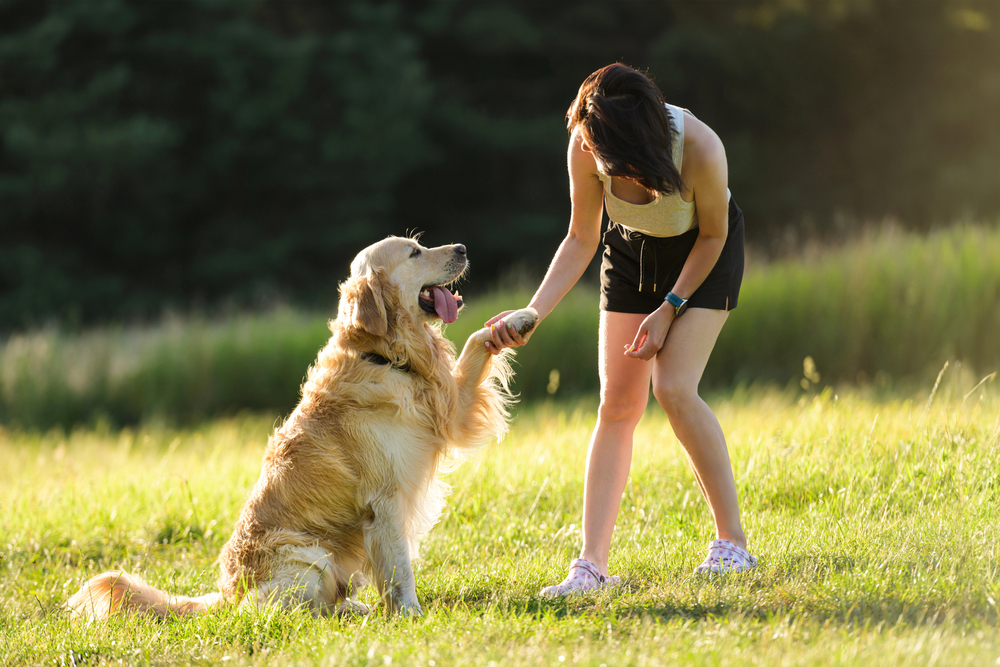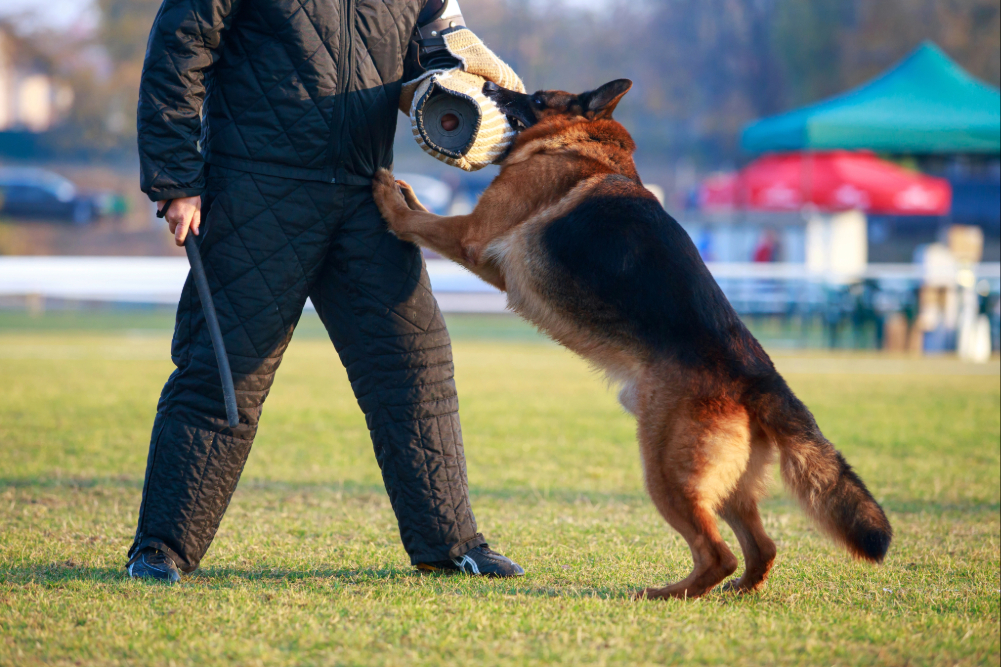
An anxious dog is not trying to be difficult. Anxiety is a genuine physical and emotional experience that may appear as pacing, whining, destructive chewing, frantic barking, drooling, shaking, hiding, or reactive outbursts. The encouraging news is that calmer responses can be learned through a structured plan that reshapes emotions first, then actions.
Behavior modification for dogs with anxiety focuses on practical, science-backed techniques. This guide explains how it works, which methods matter most, and how to turn the plan into daily habits that bring relief.
Understanding Anxiety from the Dog’s View
Anxiety is not just “bad behavior.” It is a state of heightened arousal where the dog predicts something uncomfortable is about to happen. The body shifts into a stress response; heart rate and breathing rise, muscles tense, and thinking narrows.
In this state, it is hard to listen or learn. Any effective plan starts by reducing intensity so the dog can think again. From there, training teaches safer, calmer choices that become the new default over time. Behavior modification is about changing the underlying emotional response, then reinforcing a replacement behavior until it sticks.
The Core Tools: Desensitization and Counterconditioning
Two essential methods shape progress with anxious dogs. Desensitization means gradually introducing a trigger at a level low enough that the dog remains calm.
For example, a doorbell recording might play at the lowest volume from across the house, or alone-time practice may start with standing on the other side of the door for only two seconds. The key measure is that calm remains intact, and repetition turns the trigger into something less overwhelming.
Counterconditioning pairs gentle exposure with something the dog loves. Food is the classic choice because eating and panic do not coexist easily. When the low-level trigger appears, high-value food appears and flows. When the trigger ends, the food stops. This pairing creates a new prediction: this thing brings good stuff.
Over time, the dog turns toward the handler with softer eyes instead of flinching or bracing. Progress looks like easier breathing, a relaxed jaw, and the ability to take treats and follow simple cues in the presence of the trigger.
Shaping Calm as a Skill
Shaping rewards incremental steps toward the goal. A dog working on mat relaxation during storms may first earn rewards for glancing at the mat, then stepping onto it, then lying down, and eventually resting calmly.
This approach builds understanding without forcing the dog into a position they do not yet find safe. Shaping is powerful for anxious dogs because it lets them discover calm instead of being placed in it. The dog learns that a series of small, successful choices leads to relaxation and reward.
Response Substitution: Teach What to Do Instead
Anxiety often drives dogs toward barking, lunging, pacing, or escape. Response substitution replaces those reactions with behaviors that are physically and emotionally incompatible with panic. A go-to spot or mat behavior is a favorite because a dog cannot be charging the door and resting on a mat at the same time.
A soft “find it” cue that sprinkles treats on the floor shifts the nose down and the brain into searching, which lowers arousal. Looking at the handler on cue and then back at a trigger can become a patterned behavior that replaces fixating. With practice, these alternatives become automatic.
Habituation and Extinction Done Right
Habituation is the process of getting used to routine, harmless stimuli, like the sounds of a city street or the creak of stairs. Dogs habituate best when exposure is consistent, low intensity, and paired with predictable routines. Extinction, on the other hand, is the reduction of a behavior when the payoff ends.
If demand barking no longer results in attention, the behavior fades. With anxious dogs, extinction must be used carefully. Removing payoffs without providing a safe alternative can spike frustration. The plan should always include what the dog should do to feel safe and get their needs met.
Arousal Management: The Foundation Under Everything
An anxious brain learns best at lower arousal. That means planning the day to avoid stacking stress. Sleep matters, and many dogs do not get enough of it. Quiet rest after challenging sessions helps the nervous system reset. Movement matters too.
Gentle decompression walks in calm spaces and sniffing games release tension without tipping into frantic arousal. House structure supports calm: clear door routines, measured greetings, and a predictable rhythm of activity and rest teach the body a steadier pace.
Building a Ladder of Triggers
Every trigger can be broken into smaller pieces. A dog that panics around other dogs may handle a dog at 200 feet but not at 50. A dog that fears thunder may tolerate a recording at one percent volume but not at five. Write your ladder from easiest to hardest, then work each rung until calm is reliable before climbing.
If calm breaks, step back down a rung or two. The right pace is the one where the dog keeps eating, responding to cues, and recovering quickly after small spikes.
Separation Anxiety: A Special Case
Alone-time distress is common and fixable with the same principles. The work starts with identifying the exact duration where anxiety begins. Maybe the dog is calm for 30 seconds, but vocalizes at 45. The plan builds many departures shorter than the panic point and slowly increases only when calm is solid. Owners should control departure cues as well.
Picking up keys or putting on shoes can be desensitized in isolation, so these patterns stop predicting panic. Technology helps here. A simple camera confirms when anxiety starts and how recovery looks. If the dog cannot be kept under threshold due to work schedules, short-term management such as pet sitters, daycare, or a trusted friend protects progress while training continues.
For some dogs, veterinary support with medication can reduce the intensity of panic so behavior work can take hold. Medication is not a shortcut; it is a tool that can unlock learning by lowering the volume of fear.
Noise Sensitivities and Phobias
Dogs spooked by fireworks, thunder, or city sounds need a careful blend of management and training. Start with a refuge: a quiet interior room, white noise, and a mat that already means safety. Practice relaxation in that space away from noise first. Then add very low-volume recordings while feeding or practicing easy patterns.
On noisy days, manage more and train less. Protective gear like snug garments helps some dogs, and ear protection products exist for the most sound-sensitive. The goal is not to convince a dog that fireworks are fun, but to teach them that they are safe and have a routine to follow until the storm passes.
Social Anxiety and Leash Reactivity
Anxious displays toward dogs or people often come from fear, not pushiness. Dog training begins at distances where the dog can observe and remain calm. A pattern like “look at that, then look back to me for a treat” rewires the moment of seeing the trigger into a cue for engagement with the handler.
Movement patterns such as making a gentle arc instead of marching straight at a trigger lower pressure. Over time, the dog learns that staying with the handler, eating, and breathing are how this situation goes. That predictability is soothing.
Owner Skills That Change Outcomes
Calm handling goes a long way. Dogs read tension. A steady exhale and a soft voice bring better results than tight leashes and clipped commands. Timing matters. Delivering food the moment a dog looks at a trigger before tension rises teaches a new association.
Waiting until panic starts rewards panic. Setups beat surprises; planned sessions in low-pressure environments create the reps needed for change. Consistency across family members prevents mixed messages and speeds progress.
Why Balanced, Reward-forward Methods Matter for Anxiety
Anxiety training is most effective when it prioritizes creating positive emotional shifts, clear communication, and fair boundaries. That means lots of reward for calm choices, careful management of distance and intensity, and gentle guidance away from mistakes.
Heavy-handed tactics may suppress visible reactions in the moment, but often increase internal stress that shows up later. The long game is a dog that feels safer, not a dog that goes silent.
Controlled K9: Behavior Modification Dog Training in Virginia
In our approach at Controlled K9, dogs practice calm, confidence, and clear communication in real homes and public settings. We build custom ladders for each trigger, use desensitization and counterconditioning to change the emotional picture, and teach owners the patterns that keep anxiety low at home. Daily updates show what is working.
After the program, unlimited private lessons give owners continued guidance, not as behavior modification sessions for the dog but as opportunities to better understand their dog’s needs, body language, and progress. This ongoing coaching helps families stay consistent so improvements do not stall. Difficult cases are not avoided. We work with reactivity, noise sensitivities, separation distress, and fear-based behaviors through patient, practical steps that fit daily life.
Schedule a consultation today and see how our customized dog training plans can make daily life easier for you and your dog.




Comments